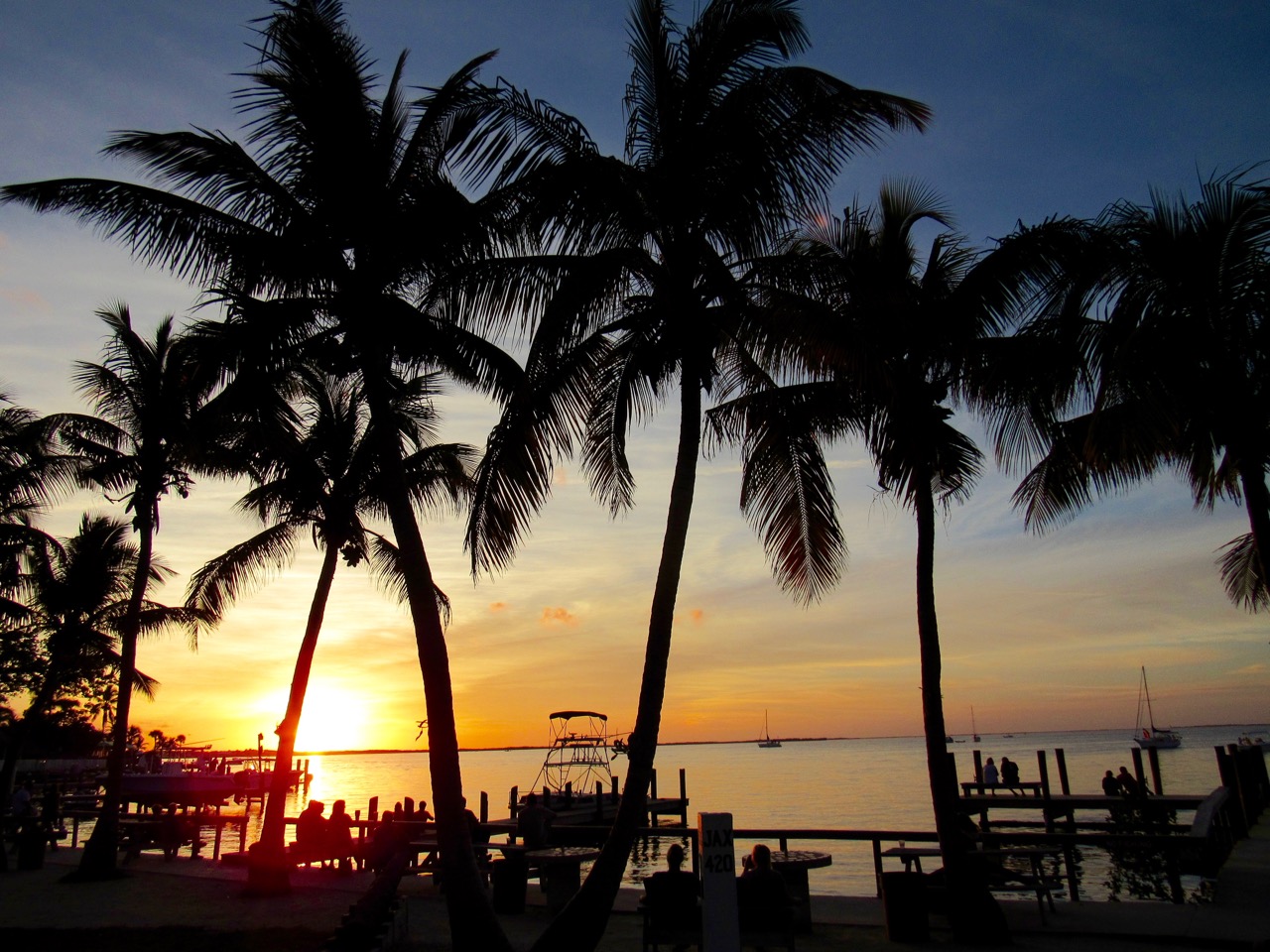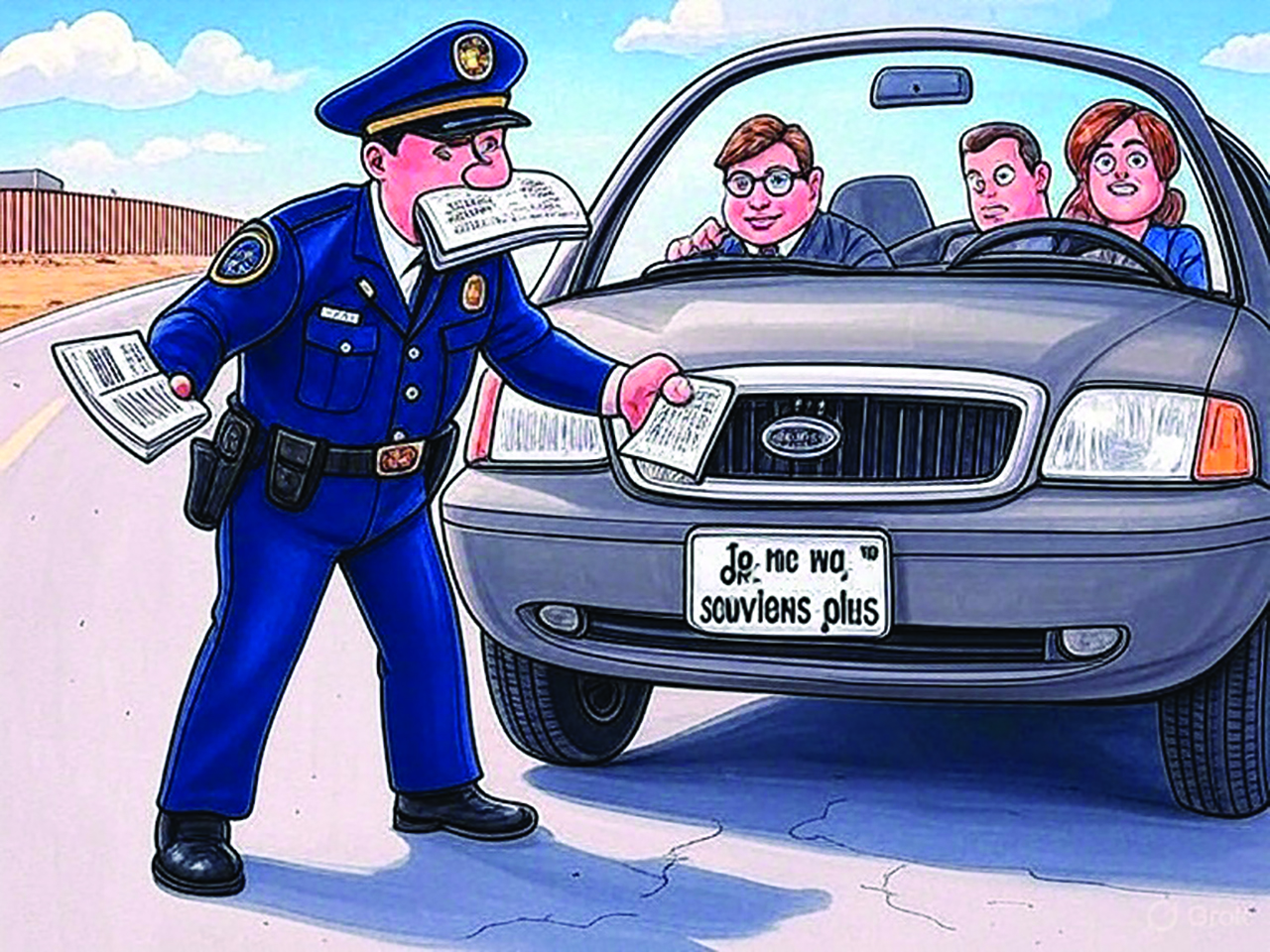Form I-94, Records, and Needless Panic: What Canadian Snowbirds Really Need to Know

In short : to stay more than 30 days in the U.S. you need a Form I-94 which you can fill out here up to 7 days before your departure: https://i94.cbp.dhs.gov/home. This is important if you cross at the land border, because for air and cruise travel it has long existed and I-94s are issued to travelers automatically. Similar procedures exist in many countries.
Another point: regardless of how you enter the U.S., if you stay more than 30 days then you must print the form once you have entered and you must do so each time you enter the U.S. Nothing else major to know.
Starting September 30, 2025, the request for an I-94 at a land border port increased from $6 to $30 ($6 previously + $24 imposed by HR-1 law). Nothing changes for arrivals by air or ship: the I-94 is still issued automatically there and there is no CBP fee to pay. This increase applies only to land entries and is charged at the moment you request the I-94 (online up to 7 days before crossing, or directly at the port). (Federal Register, i94.cbp.dhs.gov)
CBP updates regarding the I-94
-
Canadians and other visitors now receive an electronic I-94 automatically at land border crossings or upon arrival by air/sea.
-
If you did not apply for your I-94 online (which is recommended), CBP may issue a paper form at the border, but this is done in a secondary inspection context, so with a short delay.
-
Travelers can still print their I-94 themselves via the CBP I-94 website or via the CBP mobile CBP One app.
-
It is strongly recommended to keep the paper or printed form with you during your stay, to prove the length of stay in case of checks, to employers, or to government agencies (such as the police).
-
When leaving the U.S.:
-
For a paper I-94, it must be returned to the carrier, to CBP, or to CBSA if you return to Canada. Don’t forget to do this to avoid problems when you next re-enter the U.S.
-
For an electronic I-94, departures are recorded automatically for air or sea; for a land departure, it is recommended to keep proof of exit (stamps, tickets, receipts).
-
Why so much panic… when there was no reason to panic
Since 1952, U.S. law provides that foreigners (non-U.S. citizens) who stay in the United States 30 days or more must be “registered.” This is not a “Trump invention against Canadians” (as some Canadian mass media insisted in late January), nor a recent “punitive measure”: it is a long-standing general obligation applied to everyone, and the U.S. Agency simply reiterated and clarified it in 2025. The U.S. Embassy in Canada stresses: this is not specific to Canadians. (USCIS, ca.usembassy.gov)
Above all, if an I-94 (or I-94W) is issued to you at entry, you are already considered “registered” and you do not have to fill in another registration form. It is written in black and white on USCIS’s “Alien Registration Requirement” page. In other words: for a Snowbird, the I-94 is the key document, and in the majority of cases that is sufficient.
The most important thing to know (for those who are worried): since April, the testimonies we received have all been positive: none negative (and there are 100,000 members in the Courier des Amériques Snowbirds group). If the U.S. administration has tightened this procedure, it is obviously to identify foreigners who legally enter as tourists but remain illegally after the lawful period — not Canadian Snowbirds!
Such paid registration forms exist for foreigners entering Canada, and in many other countries (and soon the EU).

I-94: who, when, how… and at what cost in 2025?
- Who must have an I-94? All non-immigrant visitors have one. But if you plan to stay more than 30 days, at the land border you will be issued an I-94 (or you should request it), precisely to formalize your registration. Previously it was mainly on air or sea entries that the I-94 was created automatically by CBP during admission. Now it applies to everyone. (U.S. Customs and Border Protection)
- When to request it? For land crossings, you can pre-apply online up to 7 days before (official I-94 site or the CBP One app). (USAGov)
- How much does it cost? From September 30, 2025: $30 for requests at the land border. No CBP fee for I-94s created automatically by air or sea. (Federal Register)
- Where to find/print it? On the official site i94.cbp.dhs.gov: “Get Most Recent I-94,” “View Travel History,” “Apply for New I-94.” Beware: if you land on an Excel file, you are probably on CBP’s Public Data Portal (statistics), not the traveler portal. (i94.cbp.dhs.gov, U.S. Customs and Border Protection)
G-325R (USCIS): should you fill it out?
The G-325R is a registration form kept by USCIS. You only fill it in if you were not registered otherwise (for example, if you did not receive an I-94/I-94W upon entry). USCIS states: “Anyone issued Form I-94 or I-94W upon admission or parole is already registered.” In the real life of Snowbirds: you should have an I-94, so you do not have to submit the G-325R (except in special cases, such as a minor who turns 14 during a stay of 30 days or more — the child must then be registered within 30 days of their birthday if not already). We really advise you not to wait to request the G-325R: request the I-94.
(USCIS : https://www.uscis.gov/forms/all-forms/g-325r )
What documents to bring to the U.S. depending on the length of stay
For stays under 30 days, a Canadian passport is sufficient. No I-94 or G-325R is required. It is recommended to keep proof of residence in Canada and any travel documents (return ticket, reservation) to ease border crossing.
For stays over 30 days, the I-94 has become mandatory for any period exceeding one month. It can be requested online up to 7 days before arrival or obtained directly at the border control. The I-94 is the official proof of your admission and authorized duration.
The G-325R, often mentioned by Snowbirds, is only necessary if you do not have an I-94. On air travel you receive it automatically.
Change of address during your stay: the AR-11 (deadline: 10 days)
Another old rule, often ignored: all foreign nationals in the United States must report any change of address to USCIS within 10 days (except A/G visa holders and Visa Waiver/ESTA visitors). Canadian visitors in B status (tourism) are affected. This is done online via USCIS → AR-11. (USCIS)
Your questions, our answers (real cases read in our Facebook group “Les Snowbirds Québécois en Floride”)
Odette: “For a stay of more than 30 days, should I open a USCIS account, fill in the G-325R and the I-94 7 days before? Or just the I-94?”
In almost all cases: just the I-94. If you cross by land and plan to stay 30 days or more, make a pre-application for the I-94 (up to 7 days before) and then pay the fee in force at the date of your crossing. Once the I-94 is issued, you are already registered: no G-325R to submit. A USCIS account is useful only if later you must file an I-539 (extension) or another USCIS application. (USAGov)
Ginette: “We cross the land border to take a flight from Plattsburgh: do we still need the I-94?”
Yes, if your total stay exceeds 30 days, the I-94 is required regardless of the fact that you will then fly within the United States. The key point is the duration, not the mode of transport after entry. Request the I-94 at the land crossing (or pre-request it). (U.S. Customs and Border Protection)
Claude: “I heard that if we have NEXUS we don’t need the I-94?”
No. The NEXUS card does not replace the I-94 form. NEXUS is a program that speeds up border crossing, but it does not change immigration rules. If you stay less than 30 days, you do not need the I-94, NEXUS or not. On the other hand, for any stay of 30 days or more, the I-94 remains mandatory, even with NEXUS.
Jean-Marc: “Can the G-325R be filled before arrival, or once on site?”
Yes. But the G-325R is filled only if you were not registered otherwise. For a Snowbird, the I-94 is the proof of your registration. If you are not issued an I-94 at the land border and you stay 30 days or more, you have 30 days after entry to register with USCIS (G-325R). In practice, request the I-94 and you will have nothing else to do.
Guy: “Impossible to print our I-94; we created a USCIS account and filled the G-325R… Is the I-94 absolutely required to cross?”
For a 30-day or longer stay entering by land, the I-94 is the normal route. But the G-325R can help regularize the situation.
Marcel QG: “I declare 29 days at customs; if I want to extend beyond 30, how does it work?”
Two things:
- What counts is the “Admit Until” date on the I-94. If CBP admits you for 6 months (common for tourism), you may stay until that date; exceeding 30 days in that context does not require additional paperwork. If the officer admits you for only 29 days, and you want to stay longer, you must file an I-539 with USCIS before your authorized period expires (ideally 45 days before). (USAGov)
- As a precaution, tell the truth about your intended length of stay at entry; if you already know you will stay more than 30 days, request the I-94 and, if possible, seek admission covering your entire stay (often up to 6 months for visitors). (Travel.gc.ca)
Martin: “My I-94 from spring 2025 is ‘current’. When I click ‘apply for I-94’, I land on an Excel file. I thought the I-94 was generated automatically?”
- Air/sea: yes, the I-94 is generated automatically at each entry.
- Land: you must request a new I-94 (up to 7 days before crossing), and pay the applicable fee.
- The Excel file corresponds to aggregated public data (statistics). For your I-94, use i94.cbp.dhs.gov (traveler sections). (U.S. Customs and Border Protection, USAGov)
Marie-Lise: “I fill in the G-325R: impossible to enter my Quebec address, it asks immigration questions… I am not an immigrant.”
That is logical: the G-325R is for USCIS registration and targets people often engaged in immigration procedures. As a tourist, if you receive an I-94, you are already registered and do not have to file a G-325R. Focus on the I-94 (if >30 days by land); the G-325R does not need to be filed preemptively.
René: “Okay I can fill it up to 7 days before entering the U.S. by car, but can I do it two months before?”
No, if you do not enter the U.S. within 7 days, you will have to fill a new one and pay again.
Isabelle: “Why can’t I print it at the same time I fill it out three days early?”
Because the I-94 becomes active only at the moment you enter the U.S.
Jean-Luc: “But can’t the U.S. customs officer fill it out at the land border?”
Yes he can, but the system is still being fine-tuned (we don’t know if officers will do everything perfectly during the first season) and in any case you can be sure it will make you lose time (as well as those behind you at customs).
Tarik: “On the I94 site it says ‘most Canadians can enter the U.S. without an I-94’”
What the U.S. administration means by “most” are those staying less than 30 days.
Guylaine: “How long does the I-94 last?”
As long as you remain in the U.S.: it is not the I-94 that determines the legal length of your stay (typically a Canadian Snowbird can stay 6 months).
Quick list of things to know for autumn/winter 2025
- If you arrive by air/sea: the I-94 is created automatically. No CBP fee. Print it if necessary for administrative procedures (driver’s license, etc.). (U.S. Customs and Border Protection)
- If you enter by road for >30 days: pre-apply for an I-94 (up to 7 days before) and pay the fee ($6 until 09/29/2025, $30 as of 09/30/2025). Keep/print the I-94 once issued. (USAGov, Federal Register)
- Extending beyond the “Admit Until” date: file an I-539 before expiration (ideally 45 days prior). (USAGov)
- Change of address in the U.S.: report it via AR-11 within 10 days (except A/G & ESTA). (USCIS)
The essentials to remember
- I-94 = your proof of admission and registration. By air/sea: automatic. By land for >30 days: request it (now $30 from September 30, 2025). (Federal Register)
- G-325R: unnecessary if you have an I-94; it only applies to people not otherwise registered (rare cases for Snowbirds who do things in order).
- Address: if you move within the United States during your stay, report the address within 10 days (AR-11). (USCIS)
- No panic: these are standardized formalities, comparable to other parts of the world. The “anti-Canadian” rumors in mass media do not stand up to official texts. (ca.usembassy.gov)
Key sources (selection)
- CBP: Official announcement of the new HR-1 fees (land I-94 at $30 as of 09/30/2025). (Federal Register)
- I-94 site (CBP): online application, retrieval and printing of the I-94. (i94.cbp.dhs.gov)
- USCIS: “Alien Registration Requirement” (you are already registered if you received an I-94/I-94W).
- USCIS: I-485 (fees) and the 2024 fee rule changes. (Temple University Global Engagement)
- USCIS: AR-11 (change of address within 10 days). (USCIS)
- USA.gov: practical reminder about the 7-day pre-application for I-94 and online tools. (USAGov)
- U.S. Embassy in Canada: confirmation that registration is not specific to Canadians. (ca.usembassy.gov)
- Comparisons: Canada eTA CAD $7; EU ETIAS planned end of 2026, €20. (Government of Canada, travel-europe.europa.eu)



